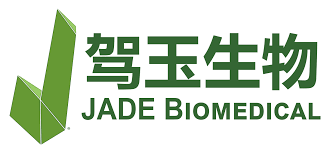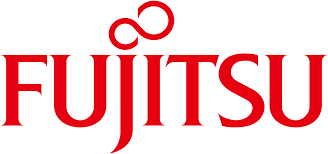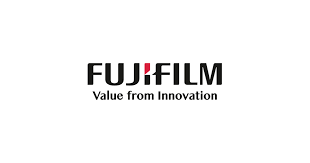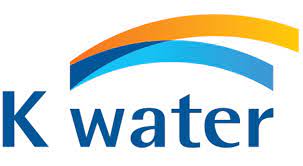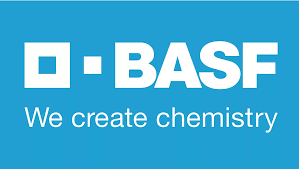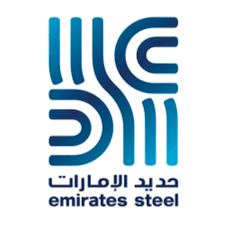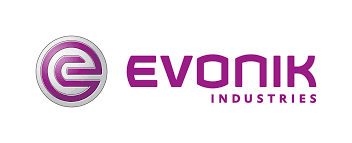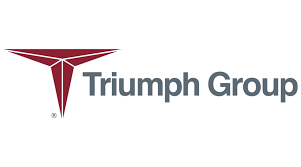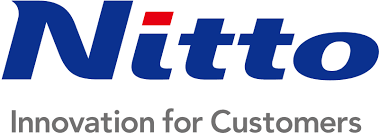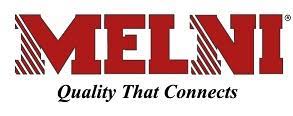Global Maternity Fashion Market Size, Share & Trends Analysis Report, By Product Type (Tops, Bottom Wear, Dresses, Tunics, Innerwear, Nightwear, Maternity support garments), By Distribution Channel (Hypermarkets/Supermarkets, Specialized Stores, Online Retail Channels, Others), By Region (North America, Europe, APAC, and Others), and Segment Forecasts, 2024 – 2032
- Report Summary
- Table of Contents
- Segmentation
- Methodology
- Download Sample
The maternity fashion market encompasses the diverse array of clothing and apparel designed specifically for pregnant women, addressing their unique style, comfort, and functional needs during the various stages of pregnancy. This market includes a wide range of maternity wear, including but not limited to dresses, tops, bottoms, activewear, outerwear, and specialized undergarments tailored to accommodate the changing body shapes and evolving fashion preferences of expectant mothers. Maternity fashion goes beyond mere necessity, offering stylish and contemporary options that allow pregnant women to express their individuality and maintain a sense of personal style throughout pregnancy. The market also considers the growing emphasis on comfort, adaptability, and inclusivity, acknowledging the diverse lifestyle and workplace requirements of pregnant women. It encompasses both physical retail outlets and online platforms where maternity fashion products are available for purchase, reflecting an industry that seeks to cater to the evolving needs and expectations of the modern pregnant consumer.
Global Maternity Fashion Market was valued at US $ 21.05 Billion in 2023 and is expected to reach US $ 32.1 billion by 2032 growing at a CAGR of 4.8% during the forecast period 2024 – 2032.
COVID -19 Impact
The COVID-19 pandemic has left a distinctive mark on the maternity fashion market, with a range of impacts reshaping consumer behaviors and industry dynamics. The disruption of global supply chains, triggered by lockdowns and manufacturing closures, led to challenges in production and distribution. As economic uncertainties prevailed, changing consumer spending patterns influenced maternity fashion preferences, with some opting for budget-friendly options. Traditional brick-and-mortar stores faced closures or reduced foot traffic, prompting a notable shift towards online shopping for maternity wear.
The pandemic-induced changes in work environments, including widespread remote work, altered maternity fashion choices, favoring comfortable and casual wear over traditional professional attire. Many pregnant women delayed maternity fashion purchases due to uncertainties surrounding the pandemic's duration. The heightened focus on health and well-being during the pandemic contributed to an increased awareness of pregnancy-related concerns, influencing the demand for maternity fashion items designed for support and adaptability. Innovations in virtual shopping experiences, such as virtual try-ons and online consultations, emerged as the industry adapted to new consumer behaviors. Despite the challenges, the maternity fashion market showcased resilience and adaptability. The continued growth of the activewear segment reflected the ongoing trend towards casual and comfortable clothing, aligning with the preferences of pregnant women seeking versatile options suitable for both exercise and daily activities. As the industry navigates the post-pandemic landscape, innovations in online shopping and a sustained focus on comfort suggest potential avenues for recovery and growth in the maternity fashion market.
Factors Driving the Market
Drivers
Surge in demand for maternity support garments
The maternity fashion market is experiencing substantial growth propelled by a notable surge in demand for maternity support garments. This upswing can be attributed to a heightened awareness of maternal health, with expectant mothers recognizing the practical benefits of support garments in ensuring comfort and addressing the physical challenges of pregnancy. The rising number of working pregnant women further fuels this demand, as these individuals seek supportive clothing that aligns with their active lifestyles while providing essential physical support. A key contributor to this trend is the integration of fashion-forward designs into maternity support garments, appealing to the preferences of fashion-conscious expectant mothers who prioritize both style and functionality.
Social media platforms play a pivotal role in amplifying this demand, with influencers and celebrities endorsing and showcasing these garments, contributing to their perception as fashionable essentials during pregnancy. Technological advancements, including innovative materials and designs, enhance the appeal and effectiveness of maternity support garments, meeting the evolving expectations of modern consumers. The emphasis on comfort-driven choices during pregnancy, coupled with the convenience of online shopping, has spurred a surge in demand for these specialized garments. The rise in disposable income has further facilitated expectant mothers' willingness to invest in a maternity wardrobe that includes supportive and stylish options, thereby driving market growth. Recognized for their prenatal and postnatal benefits, maternity support garments are increasingly embraced as a holistic approach to maternal well-being. In sum, the current surge in demand for maternity support garments signifies a comprehensive shift in consumer preferences and expectations, significantly contributing to the thriving expansion of the maternity fashion market.
Increasing availability of more comfortable designs and materials for pregnant working women
The remarkable growth of the maternity fashion market is undeniably spurred by the increasing availability of more comfortable designs and materials, specifically crafted to cater to the needs of pregnant working women. This transformative shift reflects a commitment from maternity fashion designers to prioritize comfort and functionality without compromising on style. The market now offers versatile designs that seamlessly integrate with professional wear, allowing pregnant women to maintain their active lifestyles with ease and confidence. The infusion of fashion-forward styles ensures that expectant mothers can exude a polished and contemporary appearance in workplace settings. Crucially, the incorporation of innovative materials, such as breathable and stretchable fabrics, enhances overall comfort, accommodating the natural changes in the body during pregnancy. Adaptive features like adjustable waistbands and discreet panels provide a customized fit, facilitating a seamless transition through various stages of pregnancy. The expansion of maternity fashion to include a diverse array of professional attire, from tailored suits to business-casual ensembles, caters to the evolving preferences and workplace dress codes of pregnant working women.
Emphasizing workwear essentials, maternity fashion brands are now offering functional options that prioritize the practical requirements of professionals during pregnancy. The accessibility of these comfortable designs is further amplified by the convenience of online shopping, allowing expectant working mothers to explore and purchase well-designed maternity clothing effortlessly. In essence, the market's response to the unique needs of pregnant professionals reflects a positive and empowering evolution in maternity fashion, fostering a workplace environment where women can navigate their pregnancies with confidence, comfort, and a touch of personal style.
Challenges
Certain shortcomings of maternity support products
The growth trajectory of the maternity fashion market encounters various challenges associated with certain shortcomings in maternity support products. One notable drawback lies in the limited style options of these products, often prioritizing functionality over fashion. The inconspicuous design, while intended for comfort, may deter fashion-conscious expectant mothers who seek visibly integrated support solutions that complement their overall maternity ensemble. Seasonal adaptability becomes a concern, as some products may not cater well to changing weather conditions, potentially contributing to discomfort. Sizing challenges, with some products adopting a one-size-fits-all approach, can lead to dissatisfaction among consumers, hindering widespread adoption.
Additionally, the visibility of support products, such as visible lines or bulges under clothing, poses aesthetic challenges for those aspiring to maintain a seamless and polished look during pregnancy. The limited availability of fashion-forward designs and the affordability concerns associated with high-quality maternity support products further impact their market appeal. Marketing and awareness also play a crucial role, as the effective promotion of the benefits of these products is essential for driving consumer interest and adoption. Overcoming these shortcomings requires a concerted effort to bridge the gap between style and functionality, improve sizing options, enhance seasonal adaptability, and increase awareness about the value proposition of maternity support products. Addressing these challenges can contribute to a more inclusive and thriving maternity fashion market.
Trends
Rising fashion consciousness among working women
The burgeoning fashion consciousness among working women has become a driving force behind the remarkable growth of the maternity fashion market. In professional settings, where the image is often synonymous with confidence and poise, contemporary working women are increasingly recognizing the importance of maintaining a stylish and polished appearance throughout their pregnancy journey. The market has responded with a diverse array of chic options, offering maternity suits, dresses, and business-casual wear that seamlessly blend with current fashion trends. This expansion of choices ensures that fashion-forward working women have access to on-trend and modern clothing that caters specifically to their professional lifestyle.
The influence of social media further fuels this trend, as platforms showcase influencers and celebrities proudly donning fashionable maternity looks, providing inspiration and encouragement for working women to embrace stylish options. The accessibility of online shopping platforms amplifies this accessibility, offering a broad selection that caters to diverse tastes and preferences. Moreover, as companies increasingly adopt supportive workplace policies, acknowledging the role of maternity fashion in promoting overall well-being and confidence, a cultural shift is underway. Maternity fashion is now seen not just as a practical necessity but as a means of self-expression, breaking traditional stereotypes and allowing working women to maintain their personal style while navigating the unique journey of pregnancy. This intersection of fashion consciousness, workplace inclusivity, and evolving cultural perceptions underscores the pivotal role played by maternity fashion in empowering pregnant professionals to confidently navigate their roles and environments.
Market Segmentation
By Product Type
By Product Type, the global Maternity Fashion Market is divided into Tops, Bottom Wear, Dresses, Tunics, Innerwear, Nightwear, Maternity support garments.
Outerwear is leading the product type segment with 45.6%. On the other side, Nightwear is expected to be the fastest growing with 12.3% CAGR.
Outerwear stands as a leading category, driven by its essential role in addressing seasonal considerations and the need for versatile styling. Maternity coats and jackets cater to pregnant women's requirements for warmth and protection against the elements, offering long-term utility with adjustable features that accommodate a growing belly. The emphasis on fashion-forward designs further solidifies outerwear's prominence, allowing expectant mothers to maintain a stylish and polished appearance throughout their pregnancy journey. This category aligns with the evolving preferences of pregnant consumers who seek not only practicality but also a sense of individual style.
Concurrently, nightwear emerges as the fastest-growing segment in the maternity fashion market, propelled by a fundamental shift towards prioritizing comfort during pregnancy. Maternity nightwear, including specialized designs such as stretchable fabrics and adjustable features, addresses the unique needs of expectant mothers, promoting optimal comfort during sleep. The expanded variety in nightwear offerings, encompassing maternity pajama sets, nightgowns, and sleep dresses, caters to diverse preferences and aligns with evolving lifestyle trends that emphasize self-care and well-being during pregnancy. The convenience of online shopping further accelerates the growth of maternity nightwear, allowing pregnant women to explore and purchase a wide array of comfortable and stylish options from the comfort of their homes. Together, the leadership of outerwear and the rapid ascent of nightwear underscore the dynamic nature of the maternity fashion market, where consumer preferences, practical considerations, and evolving lifestyle trends converge to shape the diverse landscape of maternity attire.
By Distribution Channel
By Distribution Channel, the global Maternity Fashion Market is divided into Hypermarkets/Supermarkets, Specialized Stores, Online Retail Channels, Others.
In 2023, Distribution channel segment, Supermarkets & Hypermarkets is leasing with 35.4% market share. On the other side, Online Retail is expected to be the fastest growing with with 10.2% CAGR.
In the maternity fashion market, supermarkets and hypermarkets have emerged as leaders, offering a convenient and accessible shopping experience for expectant mothers. These physical retail outlets provide a diverse range of maternity clothing, allowing customers to personally explore and try on items before making a purchase. The in-store setting also facilitates a personalized shopping experience, with assistance from store staff and the opportunity for hands-on product evaluation. Simultaneously, the online retail sector is experiencing rapid growth, driven by its unmatched convenience and diverse product offerings. Online platforms offer expectant mothers the flexibility to browse and purchase maternity wear from the comfort of their homes, 24/7. The virtual space caters to a global market, providing an extensive range of styles, sizes, and brands. Factors such as personalized recommendations, virtual try-ons, and customer reviews enhance the online shopping experience. The coexistence of these channels reflects the evolving preferences of consumers, with supermarkets and hypermarkets offering tangible experiences, while online retailing rapidly expands its reach, meeting the dynamic demands of the maternity fashion market.
By Region
By region, the global Maternity Fashion Market is divided into North America, Europe, APAC and Others. Others is further divided into Middle East, Africa and South America.
In 2023, North America held a significant market share at 26.5%, a figure poised for notable growth in the forecast period. This increase is attributed to the expanding influence of celebrities on social media platforms like Instagram and Facebook. Major brands like Seraphine and Thyme Maternity, specifically addressing the needs of pregnant women in the region, further contribute to this surge. A noteworthy driver of market growth is the heightened demand for plus-sized formal wear within the outerwear segment. The surge in popularity of stylish maternity attire, fueled by figures like Kate Middleton, is anticipated to boost maternity sales, particularly in European countries such as the United Kingdom and France. Additionally, the documentation of pregnancies by celebrities and influencers, like Kayla Itsines, through workout videos and social media posts serves as a promotional avenue for specific maternity wear brands.
In the Asia-Pacific (APAC) region, significant growth is anticipated during the projection period with 8.4% CAGR. This surge is fueled by the increasing expenditure by expectant mothers on their first pregnancy photoshoots and the rising purchasing power among women in the region. Developing nations such as India, China, and Argentina, as per a 2021 World Bank analysis, exhibit higher birth rates, contributing to an anticipated upswing in demand for maternity wear in the coming years. Moreover, the rising affinity for designer clothing in Middle Eastern nations like Dubai and Saudi Arabia, propelled by increased disposable income, is projected to drive demand for maternity wear in this region. Notable companies like Noon and Destination Maternity in the UAE offer exclusive maternity apparel selections tailored to the preferences of women in the region.
Competitive Landscape
The global Maternity Fashion Market is consolidated with the presence of few major players contributing to the market revenue. This dominance of these major players is driven by their technological expertise, extensive resources, and established brand recognition. These companies typically offered comprehensive and diversified solutions to end use industries.
- Seraphine
Seraphine, a maternity clothing brand hailing from the UK, is renowned for its chic and premium apparel. Boasting a diverse selection of dresses, tops, bottoms, and outerwear, all meticulously designed to enhance the beauty of the expectant form, Seraphine has been a trusted choice for mothers-to-be for over two decades. With a steadfast commitment to using top-notch fabrics and craftsmanship, Seraphine has established a reputation for creating garments that seamlessly combine style and comfort. For more than 20 years, Seraphine has been a go-to destination, consistently delivering fashion-forward collections that cater to various tastes. Their offerings span a spectrum of styles, from timeless and sophisticated to modern and cutting-edge, ensuring there's a perfect ensemble for every preference within the Seraphine repertoire. Whether seeking classic elegance or contemporary flair, Seraphine remains a reliable source for maternity wear that effortlessly marries style and comfort.
- A Pea in the Pod
Established in 1991, A Pea in the Pod stands as a prominent American maternity clothing brand celebrated for its blend of trendy, timeless, and nursing-friendly selections. Over the years, it has evolved into a staple for expectant mothers, curating a collection that seamlessly marries sophistication with casual comfort. Beyond being a fashion destination, A Pea in the Pod provides a comprehensive lifestyle experience. Distinguished by its commitment to supporting moms-to-be holistically, A Pea in the Pod's online platform and social media channels are rich with invaluable tips, expert guidance, and inspirational content. The brand extends its commitment to customer satisfaction through a rewards program and personalized styling services, ensuring a tailored and enjoyable journey for individuals seeking the perfect pieces for their pregnancy experience.
- HATCH
HATCH, a maternity fashion brand rooted in New York, distinguishes itself through a unique aesthetic and a dedicated mission to empower mothers with timeless and minimalist apparel. Established in 2010 by Ariane Goldman, HATCH swiftly garnered a devoted following for its sophisticated basics and contemporary silhouettes designed to transcend fleeting trends, offering flattering options for every phase of pregnancy and beyond. Setting a high standard, HATCH redefines everyday essentials such as leggings, t-shirts, and dresses by infusing them with premium fabrics, unexpected details, and meticulous design. Recognizing the significance of confidence and style during pregnancy, HATCH is committed to ensuring that even the simplest outfits exude sophistication and make mothers-to-be feel polished and self-assured throughout their journey.
- Motherhood Maternity
- ASOS Maternity
- JoJo Maman Bébé
- Isabella Oliver
- Pink Blush
- Latched Mama
- Mimu Maternity
- Ingrid & Isabel
- Peachiemama
- Cadence & Willow
- Nara Naturals
- Angel Maternity
- Tiffany Rose
- Ripe Maternity
- Milk & Honey
- Queen Bee Maternity
- H&M
Recent Developments
- October 2023 saw the debut of Motherhood Maternity's innovative activewear line crafted from recycled plastic bottles.
- In September, Ripe Maternity joined forces with TikTok sensation Loren Gray to unveil an exclusive limited-edition capsule collection.
- In August, Cadence & Willow introduced a cutting-edge maternity legging equipped with smart temperature control technology.
- In July witnessed Queen Bee Maternity's commitment to inclusivity by extending its size range to encompass sizes up to 5X.
- In June 2023 marked the launch of a sustainable and stylish capsule collection of maternity dresses by Hatch, a result of their collaboration with renowned designer Stella McCartney.
Maternity Fashion Market Scope
| Report Components | Details |
|---|---|
| Base Year | 2023 |
| Forecast Period | 2024 – 2032 |
| Quantitative Units | Revenue in US $ |
| Drivers | Increasing availability of more comfortable designs and materials for pregnant working women, Rising disposable income among consumers in developing countries, Surge in demand for maternity support garments |
| Challenges | Certain shortcomings of maternity support products |
| Trends | Rising fashion consciousness among working women, Constant Launching of convenient apparel for pregnant women, Rising E-commerce adoption |
| Segments Covered | By Product Type (Tops, Bottom Wear, Dresses, Tunics, Innerwear, Nightwear, Maternity support garments), By Distribution Channel (Hypermarkets/Supermarkets, Specialized Stores, Online Retail Channels, Others) |
| Countries Covered | U.S. and Canada in North America, Germany, France, U.K., Netherlands, Switzerland, Belgium, Russia, Italy, Spain, Turkey, Rest of Europe in Europe, China, Japan, India, South Korea, Singapore, Malaysia, Australia, Thailand, Indonesia, Philippines, Rest of Asia-Pacific (APAC) in the APAC, Others include Saudi Arabia, U.A.E, South Africa, Egypt, Israel, Rest of Middle East and Africa (MEA), Brazil, Argentina, Mexico, and Rest of South America as part of South America |
| Market Players Covered | Seraphine, A Pea in the Pod, HATCH, Motherhood Maternity, ASOS Maternity, JoJo Maman Bébé, ISABELLA OLIVER, Pink Blush, LATCHED MAMA, Mimu Maternity, Ingrid & Isabel, Peachiemama, Cadence & Willow, Nara Naturals, Angel Maternity, Tiffany Rose, Ripe Maternity, MILK & HONEY, Queen Bee Maternity, H&M |
Table of Contents
1 INTRODUCTION OF GLOBAL MATERNITY FASHION MARKET
1.1 Overview of the Market
1.2 Scope of Report
1.3 Assumptions
2 EXECUTIVE SUMMARY
3 RESEARCH METHODOLOGY
3.1 Data Mining
3.2 Validation
3.3 Primary Interviews
3.4 List of Data Sources
4 GLOBAL MATERNITY FASHION MARKET OUTLOOK
4.1 Overview
4.2 Market Dynamics
4.2.1 Drivers
4.2.2 Restraints
4.2.3 Opportunities
4.3 Porters Five Force Model
4.3.1. Bargaining Power of Suppliers
4.3.2. Threat of New Entrants
4.3.3. Threat of Substitutes
4.3.4. Competitive Rivalry
4.3.5. Bargaining Power among Buyers
4.4 Value Chain Analysis
5 GLOBAL MATERNITY FASHION MARKET, BY PRODUCT TYPE
5.1 Overview
5.2 Tops
5.3 Bottom Wear
5.4 Dresses
5.5 Tunics
5.6 Innerwear
5.7 Nightwear
5.8 Maternity support garments
6 GLOBAL MUSLIM FASHION ARKET, BY DISTRIBUTION CHANNEL
6.1 Overview
6.2 Hypermarkets/Supermarkets
6.3 Specialized Stores
6.4 Online Retail Channels
6.5 Others
7 GLOBAL MATERNITY FASHION MARKET, By REGION
7.1 North America
7.1.1 U.S.
7.1.2 Canada
7.2 Europe
7.2.1 Germany
7.2.3 U.K.
7.2.4 France
7.2.5 Rest of Europe
7.3 Asia Pacific
7.3.1 China
7.3.2 Japan
7.3.3 India
7.3.4 South Korea
7.3.5 Singapore
7.3.6 Malaysia
7.3.7 Australia
7.3.8 Thailand
7.3.9 Indonesia
7.3.10 Philippines
7.3.11 Rest of Asia Pacific
7.4 Others
7.4.1 Saudi Arabia
7.4.2 U.A.E.
7.4.3 South Africa
7.4.4 Egypt
7.4.5 Israel
7.4.6 Rest of Middle East and Africa (MEA)
7.4.7 Brazil
7.4.8 Argentina
7.4.9 Mexico
7.4.10 Rest of South America
8 COMPANY PROFILES
8.1 Seraphine
8.1.1. Company Overview
8.1.2. Key Executives
8.1.3. Operating Business Segments
8.1.4. Product Portfolio
8.1.5. Financial Performance (As per availability)
8.1.6 Key News
8.2 A Pea in the Pod
8.2.1. Company Overview
8.2.2. Key Executives
8.2.3. Operating Business Segments
8.2.4. Product Portfolio
8.2.5. Financial Performance (As per availability)
8.2.6. Key News
8.3 HATCH
8.3.1. Company Overview
8.3.2. Key Executives
8.3.3. Operating Business Segments
8.3.4. Product Portfolio
8.3.5. Financial Performance (As per availability)
8.3.6. Key News
8.4 Motherhood Maternity
8.4.1. Company Overview
8.4.2. Key Executives
8.4.3. Operating Business Segments
8.4.4. Product Portfolio
8.4.5. Financial Performance (As per availability)
8.4.6. Key News
8.5 ASOS Maternity
8.5.1. Company Overview
8.5.2. Key Executives
8.5.3. Operating Business Segments
8.5.4. Product Portfolio
8.5.5. Financial Performance (As per availability)
8.5.6. Key News
8.6 JoJo Maman Bébé
8.6.1. Company Overview
8.6.2. Key Executives
8.6.3. Operating Business Segments
8.6.4. Product Portfolio
8.6.5. Financial Performance (As per availability)
8.6.6. Key News
8.7 Isabella Oliver
8.7.1. Company Overview
8.7.2. Key Executives
8.7.3. Operating Business Segments
8.7.4. Product Portfolio
8.7.5. Financial Performance (As per availability)
8.7.6. Key News
8.8 Pink Blush
8.8.1. Company Overview
8.8.2. Key Executives
8.8.3. Operating Business Segments
8.8.4. Product Portfolio
8.8.5. Financial Performance (As per availability)
8.8.6. Key News
8.9 Latched Mama
8.9.1. Company Overview
8.9.2. Key Executives
8.9.3. Operating Business Segments
8.9.4. Product Portfolio
8.9.5. Financial Performance (As per availability)
8.9.6. Key News
8.10 Mimu Maternity
8.10.1. Company Overview
8.10.2. Key Executives
8.10.3. Operating Business Segments
8.10.4. Product Portfolio
8.10.5. Financial Performance (As per availability)
8.10.6. Key News
8.11 Ingrid & Isabel
8.11.1. Company Overview
8.11.2. Key Executives
8.11.3. Operating Business Segments
8.11.4. Product Portfolio
8.11.5. Financial Performance (As per availability)
8.11.6. Key News
8.12 Peachiemama
8.12.1. Company Overview
8.12.2. Key Executives
8.12.3. Operating Business Segments
8.12.4. Product Portfolio
8.12.5. Financial Performance (As per availability)
8.12.6. Key News
8.13 Cadence & Willow
8.13.1. Company Overview
8.13.2. Key Executives
8.13.3. Operating Business Segments
8.13.4. Product Portfolio
8.13.5. Financial Performance (As per availability)
8.13.6. Key News
8.14 Nara Naturals
8.14.1. Company Overview
8.14.2. Key Executives
8.14.3. Operating Business Segments
8.14.4. Product Portfolio
8.14.5. Financial Performance (As per availability)
8.14.6. Key News
8.15 Angel Maternity
8.15.1. Company Overview
8.15.2. Key Executives
8.15.3. Operating Business Segments
8.15.4. Product Portfolio
8.15.5. Financial Performance (As per availability)
8.15.6. Key News
8.16 Tiffany Rose
8.16.1. Company Overview
8.16.2. Key Executives
8.16.3. Operating Business Segments
8.16.4. Product Portfolio
8.16.5. Financial Performance (As per availability)
8.16.6. Key News
8.17 Ripe Maternity
8.17.1. Company Overview
8.17.2. Key Executives
8.17.3. Operating Business Segments
8.17.4. Product Portfolio
8.17.5. Financial Performance (As per availability)
8.17.6. Key News
8.18 Milk & Honey
8.18.1. Company Overview
8.18.2. Key Executives
8.18.3. Operating Business Segments
8.18.4. Product Portfolio
8.18.5. Financial Performance (As per availability)
8.18.6. Key News
8.19 Queen Bee Maternity
8.19.1. Company Overview
8.19.2. Key Executives
8.19.3. Operating Business Segments
8.19.4. Product Portfolio
8.19.5. Financial Performance (As per availability)
8.19.6. Key News
8.20 H&M
8.20.1. Company Overview
8.20.2. Key Executives
8.20.3. Operating Business Segments
8.20.4. Product Portfolio
8.20.5. Financial Performance (As per availability)
8.20.6. Key News
Global Maternity Fashion Market Segmentation
Maternity Fashion by Product Type: Market Size & Forecast 2023-2032
- Tops
- Bottom Wear
- Dresses
- Tunics
- Innerwear
- Nightwear
- Maternity support garments
Maternity Fashion by Distribution Channel: Market Size & Forecast 2023-2032
- Hypermarkets/Supermarkets
- Specialized Stores
- Online Retail Channels
- Others
Maternity Fashion by Geography: Market Size & Forecast 2023-2032
- North America (USA, Canada, Mexico)
- Europe (Germany, UK, France, Russia, Italy, Rest of Europe)
- Asia-Pacific (China, Japan, South Korea, India, Southeast Asia, Rest of Asia-Pacific)
- South America (Brazil, Argentina, Columbia, Rest of South America)
- Middle East and Africa (Saudi Arabia, UAE, Egypt, Nigeria, South Africa, Rest of MEA)
Major Players:
- Seraphine
- A Pea in the Pod
- HATCH
- Motherhood Maternity
- ASOS Maternity
- JoJo Maman Bébé
- Isabella Oliver
- Pink Blush
- Latched Mama
- Mimu Maternity
- Ingrid & Isabel
- Peachiemama
- Cadence & Willow
- Nara Naturals
- Angel Maternity
- Tiffany Rose
- Ripe Maternity
- Milk & Honey
- Queen Bee Maternity
- H&M


